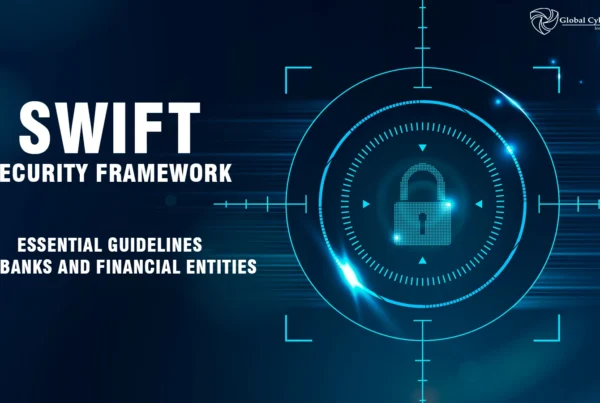
In today’s technology-driven world, cybersecurity is typically linked to tools like firewalls, encryption, software updates, and password protection. While these elements are essential for safeguarding digital systems, one crucial yet often neglected aspect lies within the hardware itself—the Printed Circuit Boards (PCB). These compact but vital components serve as the foundation of nearly all electronic devices and are becoming increasingly significant in maintaining system integrity and preventing security breaches.
This blog delves into the crucial role PCBs play in cybersecurity, emphasizing how secure hardware design has emerged as a critical line of defense against evolving cyber threats.
What Are Printed Circuit Boards (PCBs)?
Printed Circuit Boards (PCBs) are flat, rigid platforms used to physically support and electrically connect electronic components through conductive pathways, pads, and other elements typically made from copper. They serve as the backbone of virtually all modern electronics—including smartphones, laptops, servers, routers, military systems, and industrial control equipment.
While their fundamental role is to ensure seamless communication between components like microprocessors, memory units, and power supplies, PCBs have also become an essential focal point in the realm of hardware-based cybersecurity.
Why PCBs Matter in Cybersecurity?
While most cybersecurity strategies focus on software-based solutions, today’s increasingly sophisticated cyber threats are also targeting vulnerabilities at the hardware level. These lower-level exploits can circumvent even the most robust software defenses, making it essential to secure the physical foundation of electronic systems—starting with the Printed Circuit Board (PCB).
Here are four key reasons why PCBs play a vital role in cybersecurity:
- Hardware Root of Trust (HRoT)
A secure system starts at the hardware layer. Critical elements like security chips, encryption modules, and secure boot processes are embedded directly into the PCB. These components ensure that only verified and trusted software is allowed to load when the system powers on—providing essential defense against threats such as rootkits and firmware-level malware.
Without a securely designed PCB to house these features, the system’s foundational trust can be easily undermined.
- Tamper Detection and Resistance
In high-security sectors like defense, banking, and healthcare, PCBs are often designed with tamper-resistant technologies. These can include tamper-evident materials, physical shielding, or even self-destruct capabilities that erase data or shut down the device if unauthorized physical access is detected.
Such protections are impossible to implement purely through software and require dedicated hardware-level engineering.
- Firmware Protection
Firmware—the embedded code that controls hardware behavior—resides in memory chips soldered onto the PCB. If compromised, this low-level code can serve as a hidden entry point for persistent malware. Attackers may exploit vulnerabilities during production or through direct physical access to install undetectable malicious firmware.
To prevent this, PCBs must be manufactured with stringent security protocols, encrypted firmware storage, and supply chain oversight.
- Securing the Supply Chain
With electronics manufactured across global supply chains, PCBs are susceptible to risks like unauthorized hardware modifications, counterfeit components, or hidden backdoors inserted during production. These can be triggered remotely to exfiltrate data or disrupt operations.
Maintaining supply chain integrity is essential and involves using trusted vendors, verifying all components, and incorporating traceability measures throughout the PCB manufacturing process.
How PCB Design Enhances Cybersecurity?
Security can be designed directly into the PCB layout. Here’s how thoughtful design contributes to robust cybersecurity:
- Isolated Circuits for Sensitive Components
Sensitive modules like encryption chips, secure keys, or authentication processors are placed in isolated segments of the board to limit the possibility of unauthorized access via side-channel attacks. - Shielded Traces and Layers
Signal traces that carry confidential data can be protected using shielding techniques and multi-layer PCBs to prevent electromagnetic leakage, eavesdropping, or interference. - Dedicated Security Co-processors
Embedding a dedicated chip for cryptographic operations (like TPM or HSM) directly onto the PCB adds a powerful layer of protection for authentication and data encryption. - Access Control and Monitoring
Certain PCBs include embedded monitoring circuits that track voltage, temperature, or physical conditions. Anomalies could indicate tampering attempts or hardware failures that need immediate attention.
Challenges and Considerations
Integrating cybersecurity into PCB design is essential, but it comes with its own set of challenges:
- Increased Costs
Incorporating security features into PCB designs often leads to greater complexity and higher manufacturing costs. Despite this, the financial and reputational damage caused by a cyberattack typically far exceeds the upfront investment in secure hardware design. - Lack of Standardization
The hardware security domain currently lacks widely adopted global standards. This makes it difficult to apply uniform security measures across different sectors and manufacturers, leading to inconsistencies in protection levels. - Knowledge and Awareness Gaps
Security is still frequently overlooked during the early stages of hardware development. Many engineers prioritize performance, form factor, or cost over security. Bridging this gap requires a cultural and educational shift—security must become a core consideration from the initial design phase onward.
Future of PCBs in Cybersecurity
With the rapid growth of edge computing, AI devices, and the Internet of Things (IoT), the demand for secure-by-design hardware is becoming critical. In this evolving landscape, PCBs will move beyond their traditional roles to become active enablers of cybersecurity. Here’s how:
- Integrated AI-Based Security Monitoring
Future PCBs will include embedded AI that monitors device behavior in real time to detect anomalies, such as unusual power usage or data patterns—potential signs of tampering or cyberattacks.
Benefit: Real-time threat detection and response at the hardware level.
- Blockchain-Verified Manufacturing
Blockchain will be used to log every step of the PCB’s manufacturing process, ensuring transparency and authenticity. This helps prevent counterfeit components and unauthorized modifications.
Benefit: Secure, tamper-proof hardware supply chains.
- Quantum-Resistant Encryption Modules
To prepare for future quantum threats, PCBs will house encryption chips built with quantum-safe algorithms, protecting critical data against next-gen attacks.
Benefit: Long-term security in a post-quantum era.
- Self-Healing and Recovery Capabilities
Advanced PCBs will feature self-healing circuits that can isolate compromised sections, reroute data, or restore system stability automatically if under attack.
Benefit: Improved system resilience and reduced downtime.
Conclusion
Cybersecurity is no longer just a software issue—it’s a hardware imperative. Printed Circuit Boards, the unsung heroes of every electronic system, have moved from being mere structural components to becoming foundational elements of system security.
Designing secure PCBs, controlling the manufacturing process, and integrating defense mechanisms directly into the hardware is essential to creating systems that are resilient in today’s hostile digital landscape.
In an age where the line between the physical and digital is increasingly blurred, cybersecurity starts not in the cloud, but on the circuit board.



